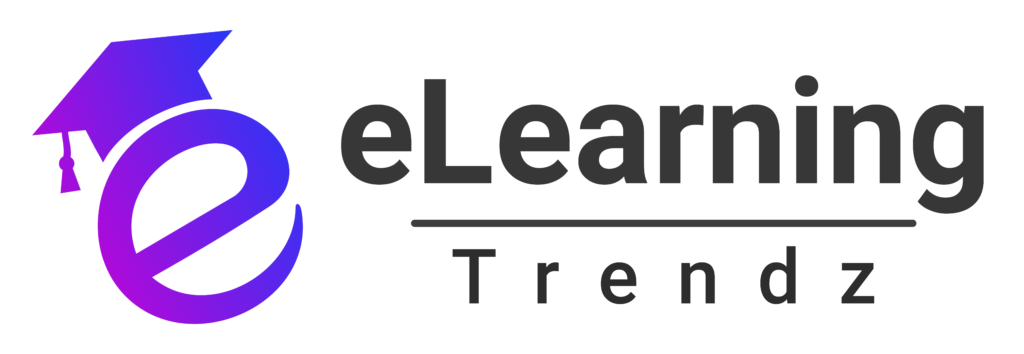The Growing Need for Multilingual Learning Experiences
As companies expand their operations globally, the need for multilingual learning experiences has become increasingly important. Language should not be a barrier to professional growth and development. According to recent studies, more than 70% of employees in multinational companies are non-native speakers of the company’s primary business language. This creates a demand for localized training content that can help ensure that all employees, regardless of their language, can benefit from the same learning opportunities.
Multilingual learning experiences help organizations achieve greater inclusivity and ensure that every employee has access to the same high-quality training, no matter where they are located. However, creating these experiences at scale and in a cost-effective manner can be a complex challenge—this is where AI plays a critical role.
How AI Has Transformed Multilingual Learning
AI has transformed the way organizations create, deliver, and manage multilingual learning experiences. With the ability to automatically translate content and personalize learning paths, AI helps to overcome the challenges of delivering training in multiple languages. Here are some of the ways AI is making multilingual learning more effective:
1. Automatic Content Translation with AI
One of the most obvious benefits of AI in multilingual learning is its ability to automate content translation. Traditional translation methods are time-consuming and often require significant human effort to ensure accuracy. However, AI-powered translation tools can translate content quickly, ensuring that learners in different regions have access to the same high-quality learning materials.
AI-driven translation tools, powered by machine learning algorithms, can handle complex content across different languages, and they continue to improve over time. For example, by using natural language processing (NLP) and machine learning, AI tools can offer translations that retain the original meaning, tone, and context, reducing the chances of errors or misunderstandings.
2. AI Chatbots for Language-Specific Support
AI chatbots are another powerful tool that helps provide personalized language support for learners. These chatbots can engage learners in their native language, answering questions, offering guidance, and providing real-time feedback in a conversational manner. By using AI, chatbots can understand and respond to queries in multiple languages, ensuring that employees receive the support they need, no matter where they are located.
AI chatbots also help reduce the workload of instructors or human resources staff by handling routine questions and tasks. This makes them a cost-effective solution for supporting large, multilingual teams while maintaining high levels of learner engagement and satisfaction.
3. Personalized Learning Paths for Multilingual Learners
AI’s ability to collect and analyze data on learner performance allows for the creation of personalized learning paths. For multilingual learners, AI can track their progress, identify language-specific challenges, and suggest relevant content to help overcome those challenges. This personalization ensures that each learner gets the most relevant content at the right time, helping them progress at their own pace while maintaining engagement.
Moreover, AI-driven systems can offer assessments in multiple languages, adapting the difficulty level based on the learner’s performance. This helps to create a more inclusive learning environment that ensures fairness across language barriers.
The Role of eLearning Authoring Tools in Multilingual Learning
eLearning authoring tools are another essential part of the puzzle when creating multilingual learning experiences. These tools are used to design, develop, and manage online courses and training programs. AI-powered authoring tools help streamline the development of multilingual courses by automating content localization, simplifying course creation, and allowing for easier updates and modifications.
Streamlining Localization with AI-Powered Authoring Tools
Creating multilingual learning content manually can be a daunting task, requiring multiple iterations of translation and adaptation for each language. AI-powered eLearning authoring tools help reduce this complexity by automating many of the steps involved in content localization. These tools enable instructional designers to quickly create and adapt courses for different languages, ensuring that the core content remains consistent while being tailored to each learner’s cultural context and language.
By integrating AI into the course development process, eLearning authoring tools can assist with text translation, image localization, and even voiceovers in different languages, all while maintaining a cohesive learning experience across various regions.
Benefits of AI in Multilingual Learning Experiences
Incorporating AI into multilingual learning programs offers several key benefits to both organizations and learners:
- Efficiency and Cost Savings: AI reduces the need for manual translations and adaptations, enabling organizations to roll out multilingual content faster and at a lower cost.
- Enhanced Learner Engagement: AI-driven tools, such as chatbots and personalized learning paths, keep learners engaged by offering relevant and timely support in their native language.
- Consistency Across Languages: AI ensures that the quality of learning content remains consistent across all languages, preventing errors or misinterpretations during translation.
- Scalability: AI allows organizations to scale their training programs across multiple languages and regions, ensuring that employees everywhere have access to the same high-quality learning experiences.
Challenges and Considerations
While AI is revolutionizing multilingual learning, there are still some challenges and considerations to keep in mind:
1. Language Nuances and Cultural Differences
AI-driven translation tools may struggle to capture the nuances of certain languages, particularly those with significant cultural differences. It is important to have human oversight to ensure that translations are accurate and culturally appropriate, even when using AI-powered tools.
2. Technological Barriers and Adoption
Not all learners or organizations may have access to the necessary technology to implement AI-driven multilingual learning systems. Ensuring accessibility for all learners, including those in remote areas or with limited access to technology, is crucial for achieving the full potential of AI in eLearning.
The Future of Multilingual Learning Experiences
The future of multilingual learning experiences looks promising, with AI technologies continuously evolving to offer even more personalized, efficient, and accessible solutions. As AI continues to improve in areas like natural language processing and machine learning, we can expect even more accurate and context-sensitive translations, more dynamic learning environments, and greater automation in content creation.
Moreover, the integration of AI with other technologies like virtual reality (VR) and augmented reality (AR) will provide even more immersive and interactive multilingual learning experiences, further breaking down language barriers in global workplaces.
Conclusion
Multilingual learning experiences are essential for ensuring that employees across the globe have access to equal training and development opportunities. With the help of AI-driven technologies such as AI chatbots, AI-powered eLearning authoring tools, and automated content translation, organizations can create scalable, efficient, and highly effective multilingual learning programs. As AI continues to evolve, the potential for transforming global learning experiences will only grow, making it easier for organizations to foster a more inclusive, engaged, and well-trained workforce.














